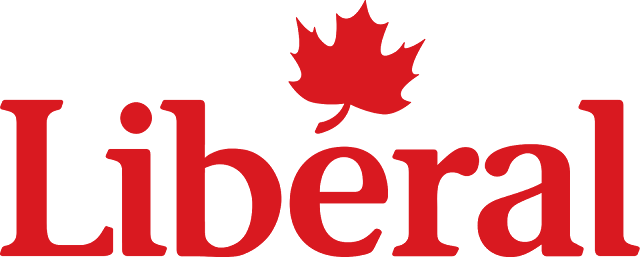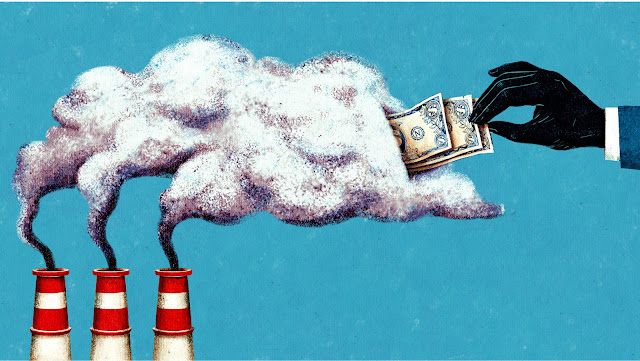캐나다 기사를 한글로 번역하여 기사 올리는 개인 블로그에 있는 글입니다.
번역기사 원본; http://thecanadalifeis.blogspot.com
2018년 12월 31일 CBC 뉴스
++++++++++++++++++++++++++++++++++++++++++++++++++++++++++++++++++++++++
2019년 세금과 캐나다 연금 그리고 탄소세에 변화가 있습니다.
+++++++++++++++++++++++++++++++++++++++++++
Your tax bill could change in 2019. Here's what to expect.
2019년 당신의 세금이 바뀐다. 어떻게 바뀌는지 확인해보자.
A whole host of federal tax changes come into effect in the new year. Some will hit your paycheque, others your bills — and if you're a small business owner, there are a couple of changes coming for which you've likely been preparing for months.
새해에는 연방정부의 모든 세금 변화가 시행된다. 어떤 사람은 급여에 타격을 받을 것이고, 당신이 자영업 자라면 청구서(또는 매출)에 영향을 주게되며, 당신이 몇 달 동안 준비했었을 것들에 몇 가지 변화가 있을 겁니다.
Starting in January, Canadians' Canada Pension Plan contributions increase from 4.95 percent to 5.1 percent on earnings between $3,500 and $57,400. It's the first of five years of graduated increases running until 2023, when the rate will reach 5.95 percent.
1월부터, CPP(캐나다연금)의 개인분담금은 3,500달러 ~ 57,400달러 사이의 소득자 기준, 4.95%에서 5.1%로 증가한다. 이것은 2023년 까지 5년에 걸쳐 점차적으로 5.95%까지 증가되는 첫 해이다.
(참고로 캐나다는 매년 정해지는 급여 상한선 이하에서만 CPP 공제를 하고 있다. 2019년 상한선은 57,400달러)
The increases are going to pay for what eventually will be an enhanced CPP. The Quebec Pension Plan will see similar changes.
이 증가는 궁극적으로 CPP의 가치를 높이게 된다. 쾌백 연금 계획도 비슷한 변화가 있을 것이다.
"You can think of it as a cost right now, but you're actually going to be contributing toward an enhanced Canada Pension Plan benefit over time, ultimately leading to a higher amount of pensionable earnings," said Jamie Golombek, managing director of tax and estate planning with CIBC.
"지금은 그것을 비용이라고 생각할 수 있지만, 시간이 지나면서 캐나다 연금 계획의 강화에 기여할 것이고, 결국 더 높은 금액의 연금 소득으로 이어지게 될 것이다." 라고 CIBC 세금 및 부동산 관리 담당 Jamie Golombek가 말했다.
"So you're actually going to get something in return for that extra contribution."
"그래서 당신은 실제로 그 추가 분담금(CPP 증가분)에 대한 보답으로 무언가를 얻을 것입니다."
Partially offsetting that increased CPP contribution on your paycheque will be a drop in Employment Insurance premiums, from $1.66 to $1.62 per $100 of insurable earnings.
당신의 급여에 대한 CPP의 분담금이 증가한 것을 부분적으로 상쇄해주는 것은 고용보험료 100달러당 1.66달러에서 1.62달러로 하락한다는 것이다.
2019 also will be the first tax year when low-income workers can qualify for a more generous Canada Workers Benefit, a program intended to help the working poor stay employed.
2019년은 저소득 근로자들이 더 넉넉한 캐나다 근로자 혜택을 받을 수 있는 첫 번째 과세 해가 될 것인데, 이 프로그램은 가난한 근로자들이 취업하는 것을 돕기 위해 만들어졌다.
The maximum benefit will increase by between $300 and $400, based on whether the applicant is single or part of a family. That brings the maximum benefits to $1,355 for a single person or $2,335 for a single parent or couple, depending on personal incomes.
그 최대 혜택의 한도는 신청자가 독신인지 가족인지 여부에 따라 300달러에서 400달러 증가한다. 그것은 개인 소득에 따라, 한 사람 당 1,355달러, 편부모 또는 부부의 경우 2,335달러까지 최대 혜택을 가져다 준다.
However, as 2019 is the eligibility year, low-income workers will have to wait until 2020 to get the boosted benefit.
그러나, 2019년이 적격(실시)년도이기 때문에 저소득 근로자들은 증대된 혜택을 받기 위해 2020년까지 기다려야 할 것이다.
Experts say more than half of Canadians who live in poverty are working.
"Gone is this idea, I hope ... that people live in poverty because they just need to find a job, they need to pull up their bootstraps and get off their couch," said Michele Bliss of the non-profit advocacy group Canada Without Poverty. "That idea is so antiquated."
전문가들에 의하면 빈곤층으로 살고 있는 캐나다인의 절반 이상이 일하고 있다고 말합니다.
비영리 단체 옹호 그룹 빈곤없는 캐나다의 미쉘 블리스 (Michele Bliss)는 말했다. "사람들이 일자리를 찾을 필요가 있기 때문에 사람들이 빈곤 한 상태에서 살고 있고, 그들은 그곳에서 혼자 힘으로 빠져나와야합니다. 그 쇼파에서 나와야합니다. 그 생각은 너무 구식이다."
Small business tax changes
One of the big news stories of the past year and half has been the changes the federal government is making to small business taxes. The most controversial change affects the rules on how much passive income an incorporated small business can hold.
소기업(또는 소상공인) 세금 변경
지난 1년 반 동안 일어났던 가장 큰 뉴스 중 하나는 연방정부가 소기업에게 부과하는 세금의 변화였다. 가장 논란이 많은 변화는 중소기업에서 얼마나 많은 간접소득을 가질 수 있는지에 대한 규칙에 영향을 미치는가 하는것이다.
Passive income is money earned in interest on funds that sit idle within an incorporated business, without being reinvested or used to cover operating expenses. As of January 1, business owners can generate up to $50,000 in passive income before they start to lose access to the advantageous small business tax rate.
간접소득이란 재투자되거나 운영비를 충당하기 위해 사용되지 않고, 통합된 사업체 내에서 유휴 상태인 자금에 대한 이자에서 번 돈이다. 1월 1일 현재, 사업주들은 유리한 소기업 세율에 근접하기 전에 최대 5만 달러의 간접소득을 발생시킬 수 있다.
Small businesses pay a relatively low tax rate — currently 10 percent — on the first $500,000 of business earnings. But starting in January, if those businesses hold in excess of the new limit on passive income, some of that first half-million in earnings will be subjected to the much higher corporate rate, depending on how far over the new limit they are.
중소기업은 첫 번째 50만 달러의 사업 소득에 대해 비교적 낮은 세율 (현재 10%)을 납부한다. 그러나 1 월부터 그 기업들이 새로운 간접소득 한도를 초과하여 보유하고 있다면, 50만 달러의 수익 중 일부는 새로운 한도를 얼마나 초과하였는지에 따라 훨씬 더 높은 법인세율을 받게 될 것이다.
The federal government's goal is to encourage business owners to reinvest their passive earnings into their businesses, or into hiring more people, rather than sitting on the cash.
자영업자가 간접소득을 사업에 재투자하거나 현금을 사용하는 대신 더 많은 사람들을 고용하도록 장려하는 것이 연방 정부의 목표이다.
"I think a lot of small businesses are still unaware that some of the changes are coming," said Dan Kelly, president of the Canadian Federation of Independent Business.
"In fact, that's one of my biggest worries. I think a lot of firms are sitting ducks for the Canada Revenue Agency."
"아직도 많은 소기업들이 일부 변화가 오고 있다는 것을 모르고 있다고 나는 생각한다"고 CFIB의 Dan Kelly 회장은 말했다.
"그것은 나의 가장큰 걱정거리이다. 내 생각에는 많은 회사들이 캐나다 세무당국에 무방비 상태인것 같다.
However, the small business tax rate is going down from 10 to 9 percent in 2019 — a move long promised by the Liberal government, one that many saw as an attempt to placate a small business community angered by the passive income changes.
그러나 중소기업 세율은 2019년 10퍼센트에서 9퍼센트로 낮아지고 있는데 이는 많은 이들이 간접소득 변화에 분노한 중소기업 층을 달래기 위한 자유당의 시도로 간주되고 있다.
"But the passive investment increases are going to eclipse any reduction in taxes that a small business might feel," said Kelly.
"하지만 간접투자 증가는 중소기업이 느끼는 세금 감면이 빛을 잃게될 것이다."라고 Kelly는 말했다.
Still, the federal government estimates the average small business — one that has eligible business income of $107,000 — will keep an extra $1,600 per year after the cut.
그럼에도 불구하고, 연방 정부는 평균 소기업(적격 사업 소득이 107,000 달러 인 일반 중소기업)이 연간 1,600달러를 추가로 지출 할 것으로 추산한다.
And for some really small businesses — especially those with no passive income to worry about — that tax cut will be very welcome.
그리고 일부 정말로 작은 기업들 (특히 간접수입이 없는 것을 걱정하는 기업들)에게는 세금 감면이 매우 환영받을 것이다.
"2018 was actually one of the toughest years we've had.
We sell a niche product that's been copied and is now sold in box stores. So we're competing with a lot of big businesses here," said Katrina Barclay of Malenka Originals in Ottawa. Her store refurbishes outdated furniture with special chalk paint.
"2018년은 실제로 우리의 가장 힘든시기 중 하나였습니다.
우리는 복제된 틈새 상품을 박스스토어에서 판매한다. 그래서 우리는 많은 큰 상점들과 경쟁하고 있다."고 Malenka Originals의 Katrina Barclay가 말했다. 그녀의 가게는 낡은 가구를 특별한 초크 페인트를 이용해 개조한다.
"At the end of the day, at the end of the month, if there's a little bit of extra money left over that we can reinvest into the business, then it definitely helps."
"하루가 끝날때나 월말에, 우리가 사업에 재투자할 수 있는 약간의 여분의 돈이 있다면, 그것은 확실히 도움이 된다."
Higher prices at the pump
Possibly the most politically charged tax change coming in 2019 is Ottawa's new carbon pricing system. In jurisdictions that don't have carbon pricing mechanisms of their own, Ottawa will levy a tax on fossil fuels of $20 per tonne of greenhouse gas emissions starting in the new year, rising by $10 each year to $50 a tonne by 2022.
Gas(주유소 가격) 가격의 상승
아마도 2019년에 있을 가장 정치적으로 격론을 부를 세금 변화는 오타와의 새로운 탄소세 제도일 것이다. 오타와는 탄소 가격 책정 방식이 없는 관할구역에서 새해부터 온실 가스 배출 톤당 20달러의 화석 연료에 세금을 부과할 것이며, 매년 10달러씩 상승하여 2022년에는 톤당 50달러의 세금을 부과할 것이다.
Emissions over set limits from large, industrial emitters in provinces without carbon pricing systems will fall under the federal governments carbon pricing rules starting in January. For consumers, the cost of fossil fuels and the services they support will start going up in April.
탄소세를 도입하지 않은 지방 내 대규모 산업용 방출체로부터의 배출 제한에 대한 연방정부의 탄소세는 1월부터 시행되며 소비자들의 화석연료와 그들을 지원하는 서비스재의 가격은 4월에 상승하기 시작할 것이다.
The government estimates that, once the carbon tax is in place in the provinces where it will be imposed, the cost of a litre of gasoline will go up 4.42 cents, natural gas will go up 3.91 cents per cubic metre and propane will go up 3.10 cents a litre.
정부 추산에 의하면 일단 탄소세가 부과될 지방에 부과되면 휘발유 1리터 가격은 4.42센트가 오르고 천연가스는 1입방미터당 3.91센트가 오르고 프로판 가스는 1리터당 3.10센트가 오를 것으로 추산하고 있다.
People in those provinces will get direct rebates to offset the increased costs. The amount will vary based on the province and the number of people in the household. In Ontario, for example, the rebate for the average household (defined as 2.6 people) would be about $300 a year, or about $248 in New Brunswick, or $336 in Manitoba, or $598 in Saskatchewan.
이 지역 주민들은 인상된 비용을 상쇄하기 위해 직접적인 리베이트를 받게된다. 그 금액은 지역과 가구원수에 따라 달라지는데 예를 들면, 온타리오의 경우 평균 가구(2.6명 기준)당 리베이트는 연간 약 300달러, 뉴브런즈윅의 경우 약 248달러, 매니토바의 경우 336달러, 사스캐츄원의 경우 598달러일 것이다.
"I think the government has designed this system in a way that will prevent us from getting a big ding from the carbon pricing system," said Nick Rivers, Canada Research Chair in Climate and Energy Policy at the University of Ottawa.
"나는 정부가 탄소 가격 책정 시스템에서 큰 변화를 가져 오는 것을 막을 수있는 방식으로이 시스템을 설계했다고 생각한다."라고 Ottawa 대학 부속 기후 에너지 정책 연구소의 캐나다 연구 의장인 Nick Rivers가 말했다.
In Yukon and Nunavut, consumers will see the cost of fossil fuels rise due to carbon pricing — but because the territories themselves are adopting the federal system, the revenue will go to the territorial governments, not to individual households.
유콘과 누나붓 준주에서 소비자들은 탄소 가격 때문에 화석 연료 가격이 상승 할 것으로 보고있다. 그러나 준주 자체가 연방 시스템을 채택하고 있기 때문에 그 수입은 개별 가구가 아닌 준주 정부에 돌아갈 것이다.
아래는 지난 기사에서 다뤘던 우표 가격의 인상에 대한 내용입니다.
지난 기사번역 참조; https://goo.gl/LLqQkJ
Other tax and price changes coming:
Postage stamp prices are set to increase.
$1.05 for a single domestic letter mail stamp
$1.27 for a U.S. letter mail stamp
$2.56 for an international stamp
Many personal income tax credit and benefit amounts are being indexed to inflation:
The basic personal amount rises to $12,069
The annual contribution limit to tax-free savings accounts will increase to $6,000 from $5,500
기타 세금 및 가격 변동:
우편 우표 가격이 인상될 예정.
국내 우편 우표 한 장에 1달러05센트
미국 우편 우표 1달러 17센트
국제 우편 우표 2달러 56센트
많은 개인 소득세 공제 및 benefit 금액은 인플레이션에 따라 연동.
기본 개인 공제 금액은 12,069달러 까지 증가.
비과세저축예금(TSFA)에 대한 연간 출자 한도는 5,500달러에서 6,000달러로 증가.











